
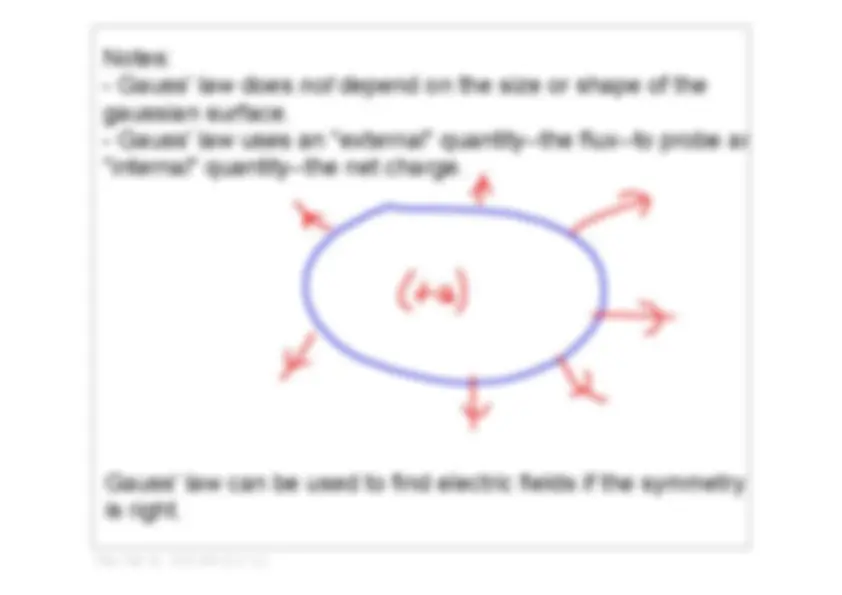
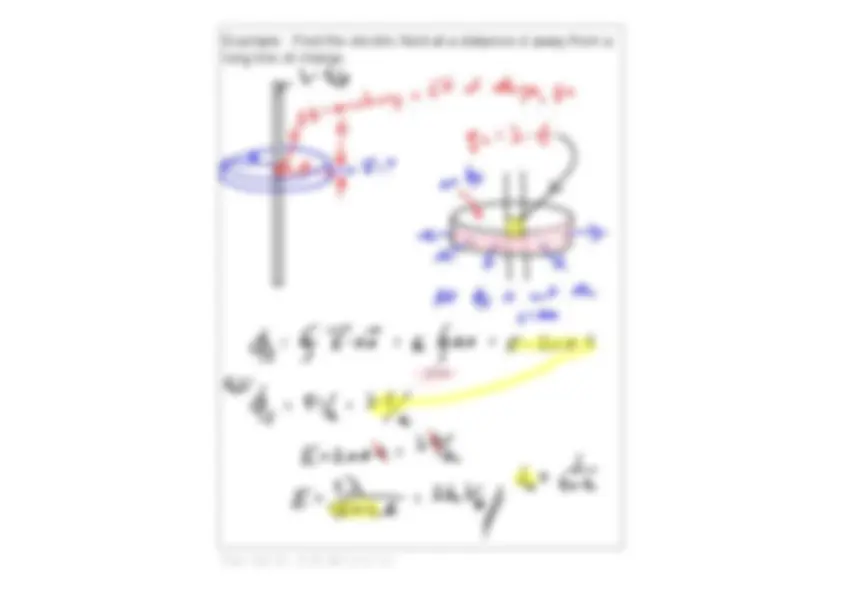
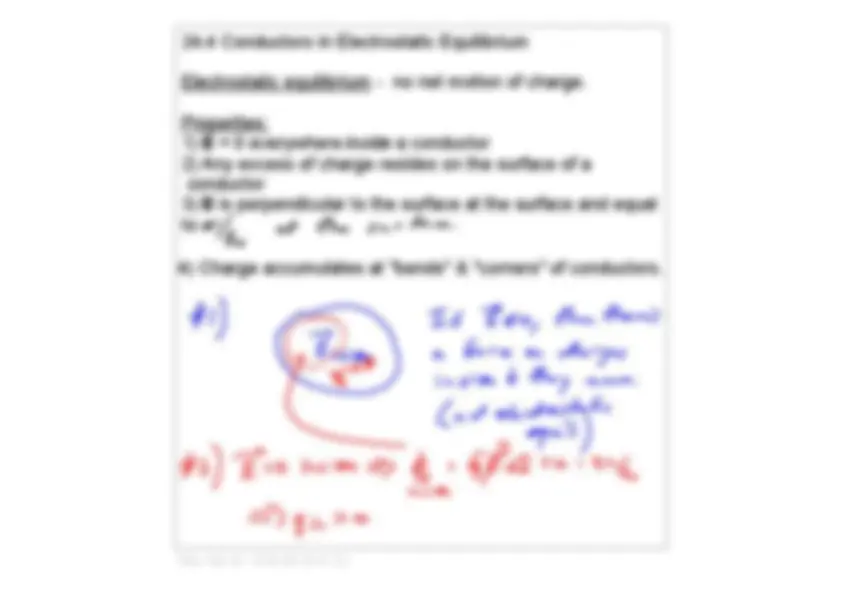
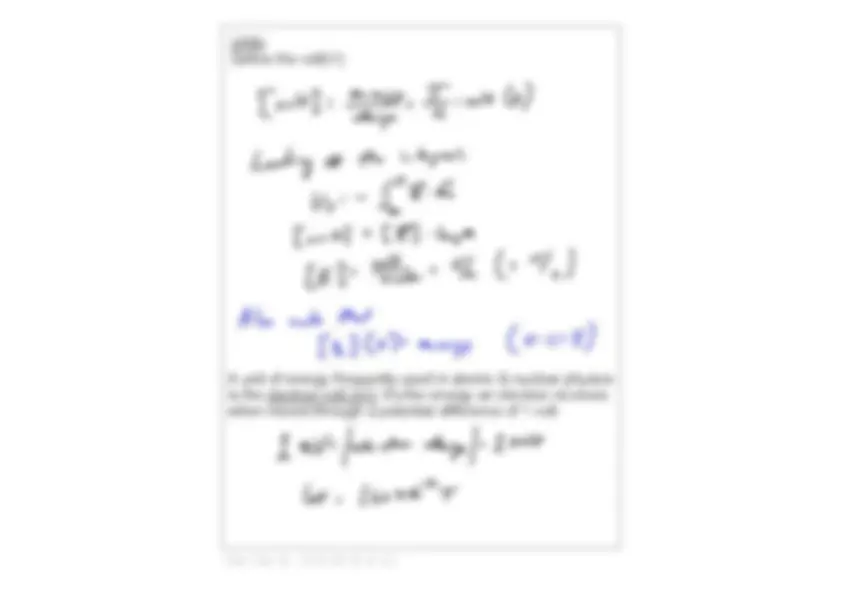
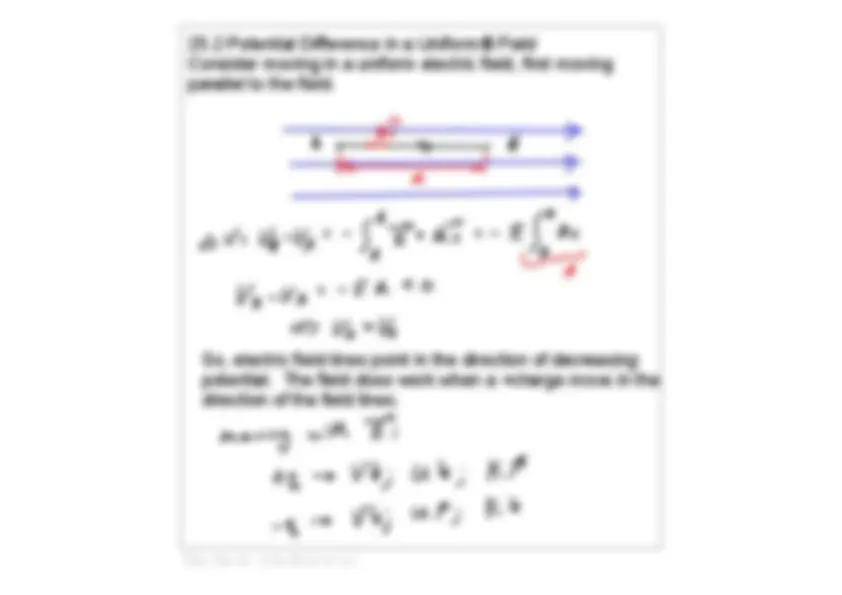
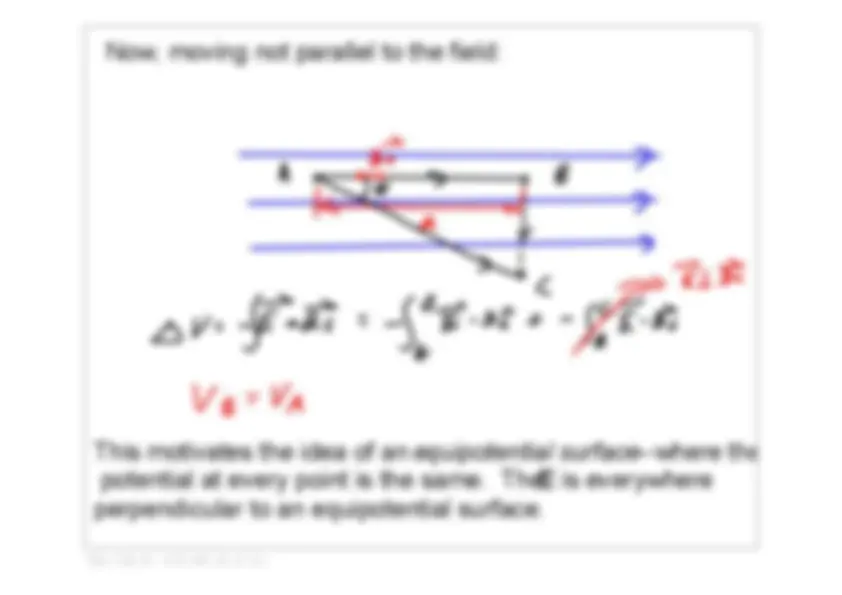


Study with the several resources on Docsity

Earn points by helping other students or get them with a premium plan


Prepare for your exams
Study with the several resources on Docsity

Earn points to download
Earn points by helping other students or get them with a premium plan
Community
Ask the community for help and clear up your study doubts
Discover the best universities in your country according to Docsity users
Free resources
Download our free guides on studying techniques, anxiety management strategies, and thesis advice from Docsity tutors
An introduction to gauss' law and its applications in finding electric fields, as well as the concept of electric potential and potential difference. Gauss' law is a principle that states the total electric flux through any closed surface is proportional to the charge enclosed. The document also covers the properties of conductors in electrostatic equilibrium and their relation to gauss' law through the concept of equipotential surfaces.
Typology: Study notes
1 / 12

This page cannot be seen from the preview
Don't miss anything!







24.2 & .3 Gauss' Law & Applications Karl F. Gauss recognized that the flux through any closed surface is proportional to the charge inside (& nothing else). This result is know as Gauss' law:
Example: Find the electric field at a distance d away from a long line of charge.
24.4 Conductors in Electrostatic Equilibrium
Electrostatic equilibrium no net motion of charge.
Properties:
E = 0 everywhere inside a conductor
Any excess of charge resides on the surface of a conductor
E is perpendicular to the surface at the surface and equal to
Charge accumulates at "bends" & "corners" of conductors.
Ch 25 Electric Potential
25.1 Potential Difference & Electric Potential
Much as we defined the electric field as the force per unit charge, we define thepotential difference as the change in potential energy per unit charge:
We choose the reference point (where U & V = 0) to be out at infinity
This is the potential at the point P.
Units: Define the volt(V):
A unit of energy frequently used in atomic & nuclear physics is the electron volt (eV). It's the energy an electron receives when moved through a potential difference of 1 volt.